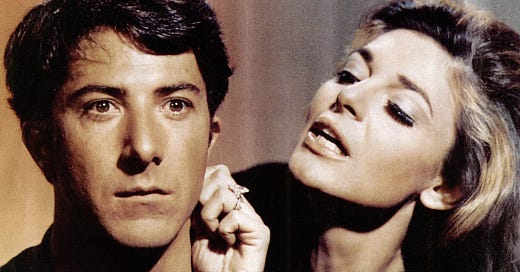Seduce key decision-makers by being a Chief Persuasion Officer
That's the unofficial title one of my clients has given me after a successful storytelling strategy. So why don't more companies appoint a CPO to influence the CMO, CFO, COO and CEO?
‘I expect AI to be capable of superhuman persuasion well before it is superhuman at general intelligence…and that could lead to some very strange outcomes.’ I’m always interested in what Sam Altman, the CEO of OpenAI, has to say partly because I’m such a fan of his ChatGPT platform. Whenever I use it with clients, they’re reminded of how much more powerful human storytelling is. Just because you can do something at superhuman speed, doesn’t mean it’s better.
But what is ‘superhuman’ persuasion? It sounds like the beginnings of a great Marvel comic in which the hero talks people into doing things. Or is that the villain?
Anyway, it reminded me of a recent seminar I attended in which one of the market research industry’s leading figures boldly declared: ‘We need to be better at persuading brands and their CEOs that we should be essential to their decision-making. Right now we’re not because we’re not telling our story well enough and we’re not telling their stories well enough.’
Her solution certainly persuaded me: ‘Perhaps we need to learn the art of seduction from outsiders who use these persuasive skills in their own work. We need the humility to know we don’t possess all of the answers. We need storytellers to help us.’
I loved her reference to seduction. I use it in my workshops, alongside a slide from one of my favourite films, The Graduate, in which pampered graduate Dustin Hoffman confronts the mother of his childhood friend, Anne Bancroft: ‘Mrs Robinson, you’re trying to seduce me.’ Great journalistic stories – and especially headlines – seduce.
The point raised by my insights guru is crucial. We all need to challenge ourselves, to have the courage to abandon our comfort zones and embrace discomfort. I do it every time I walk into a storytelling masterclass with a client. As a journalist within the insights industry, I feel like an interloper ready to be challenged by suspicious data experts and marketers who doubt the powers of newsroom storytelling to transform their industry.
As I was last week with insights leaders at a major financial institution. Our arguments, polite though they were, forced both sides to question their methodologies. In other words, we persuaded each other to learn from each other. It was a brilliant session and I know I’m a better trainer for it.
If we keep talking to ourselves, we won’t make any progress. We need the discomfort that persuasive argument – inspired by outsiders - can bring. Very often, that involves knowing who the hero of your story is. It’s not your company or your data or methodology (so stop putting that at the top of your presentations). The hero is your client, their needs and decisions. They’re the ones you need to seduce.
Coincidentally, I’ve been given an heroic new title by one of my clients who, against all odds, was recently awarded Storytelling Presentation of the Year by her CEO. She runs the insights team for a well-known FMCG company which places a premium on the way material is shared internally.
Normally it’s her colleagues in advertising, marketing or learning who craft the best stories but this time (and, yes, I might have been involved) she delivered a journalistic story that was not data-heavy, that had a thread, that played on emotions and that persuaded her boss and peers.
So I’m now called her department’s Chief Persuasion Officer. Together, we know that data alone won’t persuade people to do something, but a story might.
WATCH THIS
Whilst our political discourse right now is consumed with the ludicrous, if catchy, slogan ‘Stop the boats’, I much prefer a recent Italian take on a migrant crisis that has cost thousands of lives and is influencing voting behaviour across Europe. This advert, from both Ogilvy and NGO Emergency, uses satire as a storytelling tool to make you think again. I love it.
READ THIS
One man’s quest for the perfect Japanese-style kitchen knife. It doesn’t sound like the makings of a captivating 8,000-word feature but, believe me, it is. Multiple stories all layered on top of each other with some fascinating detail. Plus, it all takes place in Chicago which is also the setting of one of TV’s great comedy-dramas, The Bear, in which the chef’s prized possession is…a Japanese knife.
LISTEN TO THIS
As I’ve discovered this past decade, people love to hear stories from inside the newsroom, to better understand how and why journalism works. Used responsibly, it’s an unbeatable form of storytelling because it’s so fast, agile, useful and relevant. And this brilliant BBC radio series uncovers some fascinating insights into what makes a great journalistic story. You’ll learn so much about the industry – though you may not like what you hear!




